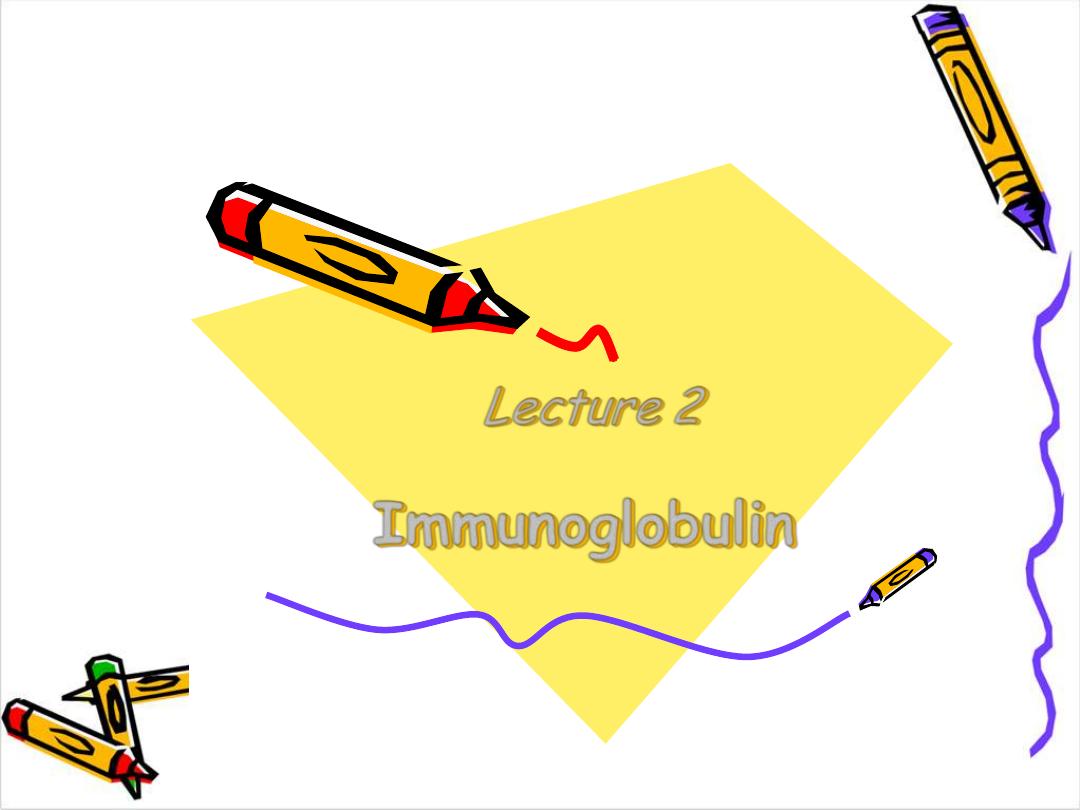
Lecture 2
Immunoglobulin

Objectives;
Define secretary IgA
Describe structure & functions of IgM
Compare the antigenic receptor of B
lymphocyte
Assess the role of IgE in Atopy
Distinguish between Isotype, Allotype &
Idiotype
Explain Anti-idiotype Ab
List the characteristic of specific
Immune response
Compare between primary &
secondary Immune Response

IgA
Constitute 15% of total serum Ig
Main Ig in
the external secretions
as saliva
tears breast milk
Subdivided into IgA1 & IgA2 subclasses
It has 2 forms ;
1-Monomeric in the blood
2- dimeric in the external secretions

Dimeric IgA
• IgA synthesized by plasma cell as monomeric
one in the submucosa which will be combine
with another monomeric IgA by a
polypeptide J chain to form dimeric IgA this
will be protected by a secretary piece from
the secretary epithelium to form the
secretary IgA
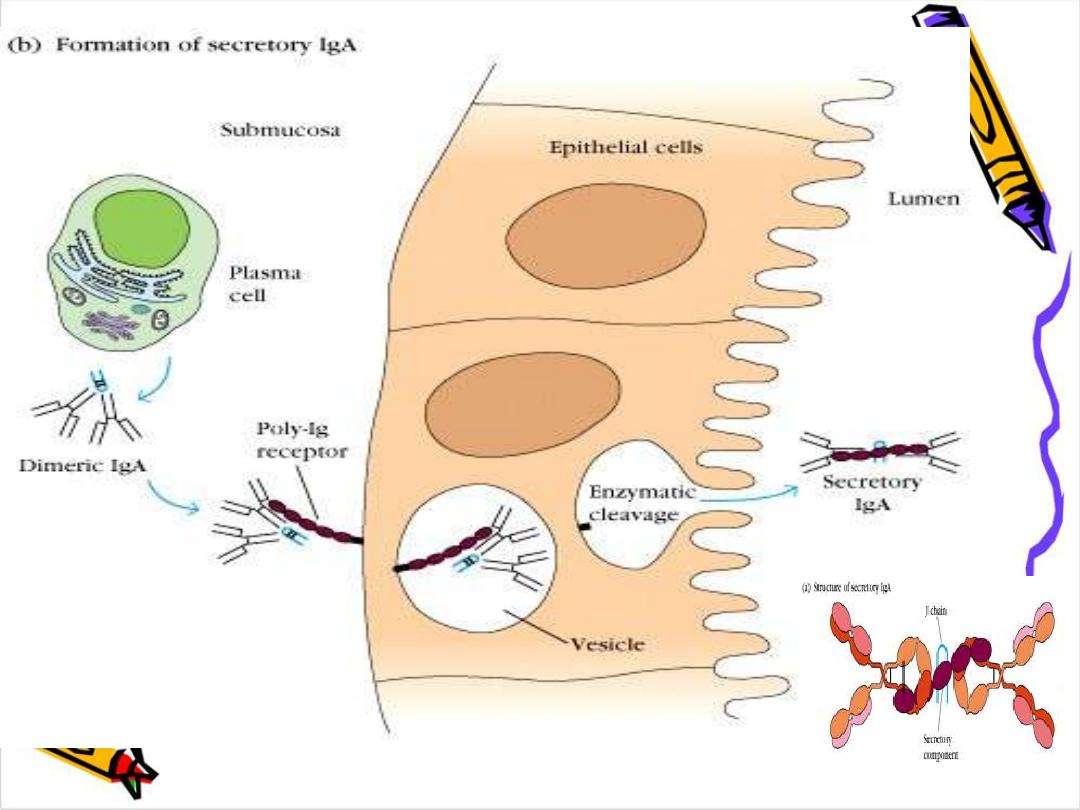
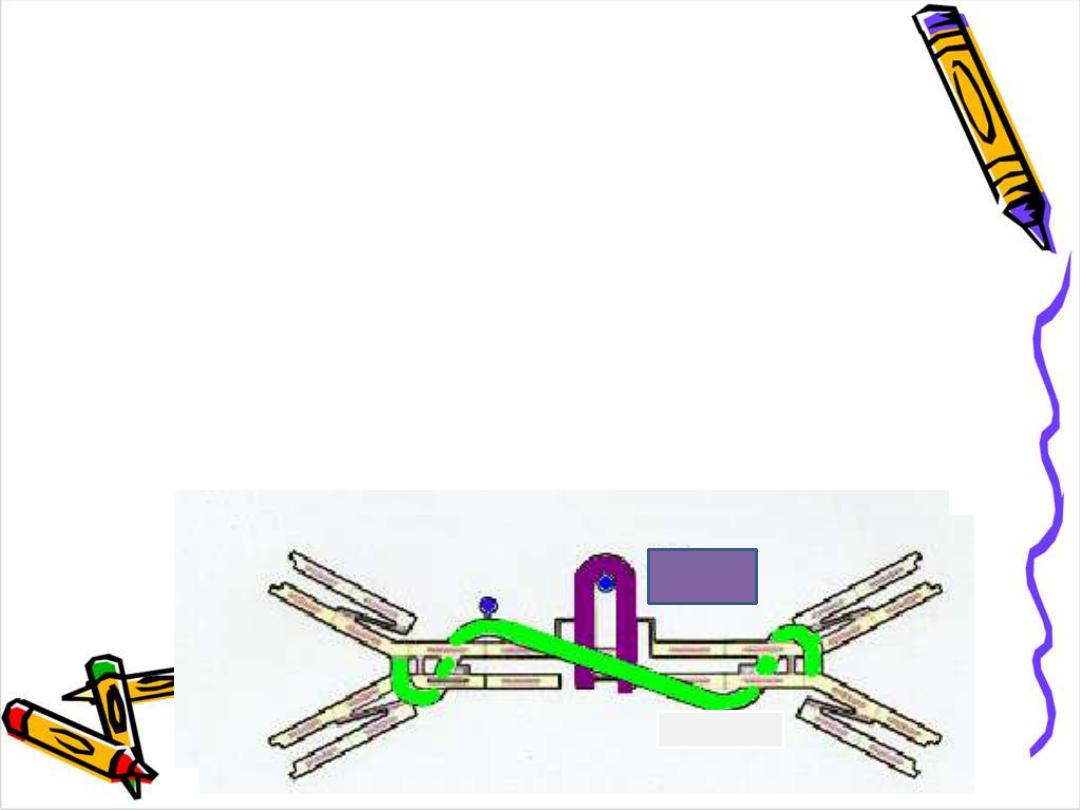
Secretory piece(
SP
):
. Produced by
mucosa epithelial cells
.
Secretory IgA (sIgA)
. Functions:
protect sIgA, resist proteolysis in
extra secretory liquid.
IgA
J chain
SP
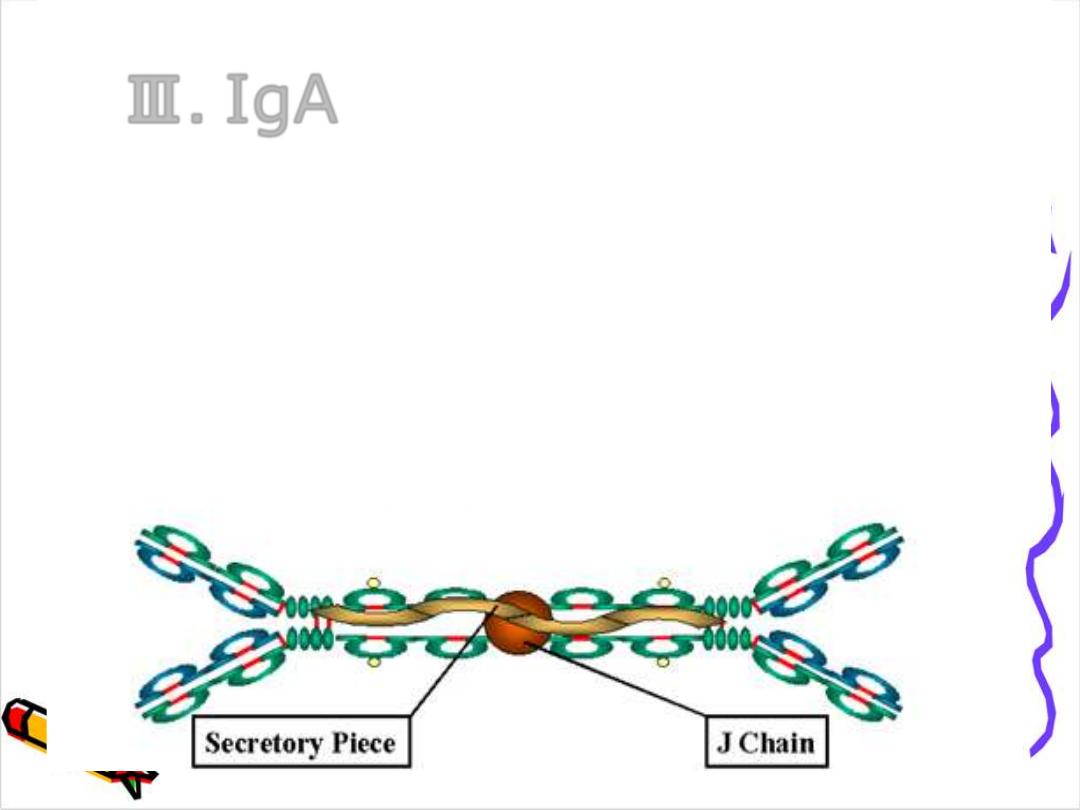
Ⅲ. IgA
1. Two types
Serum type
:
monomer
Secretary type(sIgA)
: dimer
2. Two subclasses:IgA1,IgA2

Functions of secretary IgA
Activation of the complement
through the alternative pathway
Blocking & Neutrilization
opsonization

IgM
• Constitute 10% of total serum Ig
• Its molecular weight 900 000 (
Heavy
)
• It has 2 forms
1-Monomeric form on the surface of
B
lymphocytes as antigen Receptor
together with IgD
2-
pentameri
c IgM 5 monomeric connected
by J chain
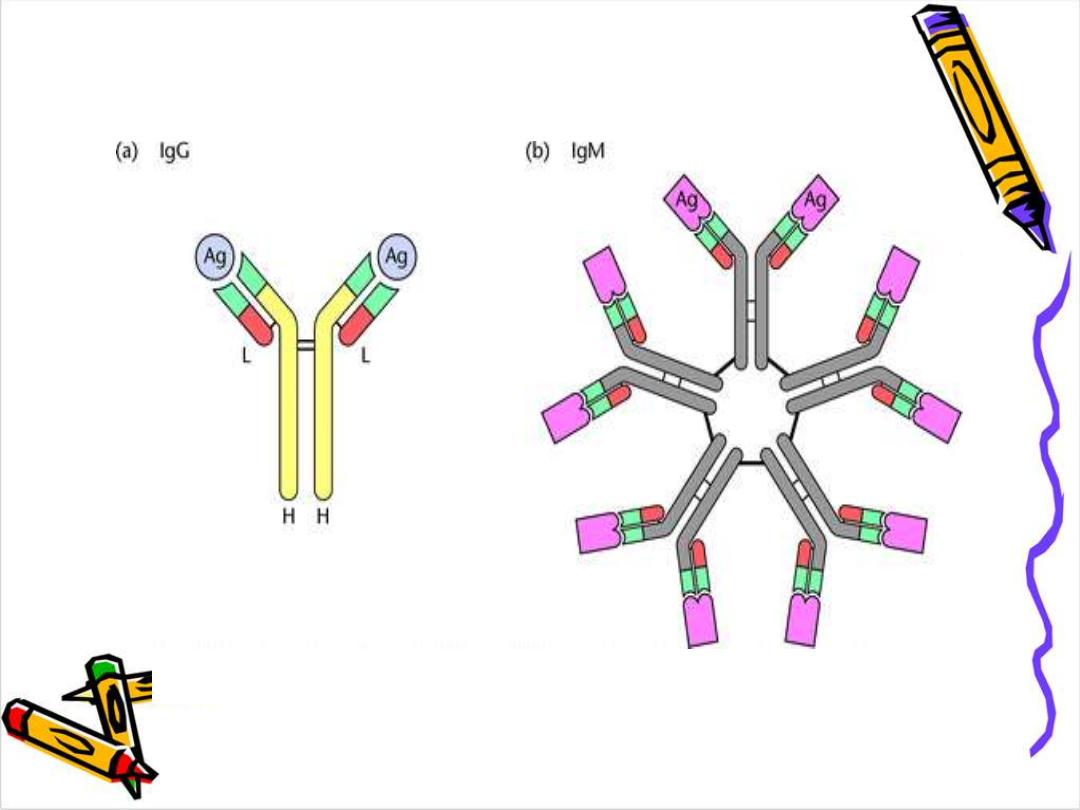
Pentameric IgM

• IgM has no hinge region replaced by an
additional domiain(CH2)---CH3,CH4
• Pentameric IgM has 10 FAB so it is the most
agglutinating & complement fixing Ab
• It is the main Ig in the primary immune
response
• It is the 1
st
Ig synthetized by the fetus

IgD
Very low concentration in the blood less
than 1%
Short half life 2-3 days
Present on the surface of B lymphocyte
together with monomeric IgM as a
surface
antigen receptor of B lymphocyte
Immature B cell only IgM on its surface
Mature B cell IgM+IgD on its
surface
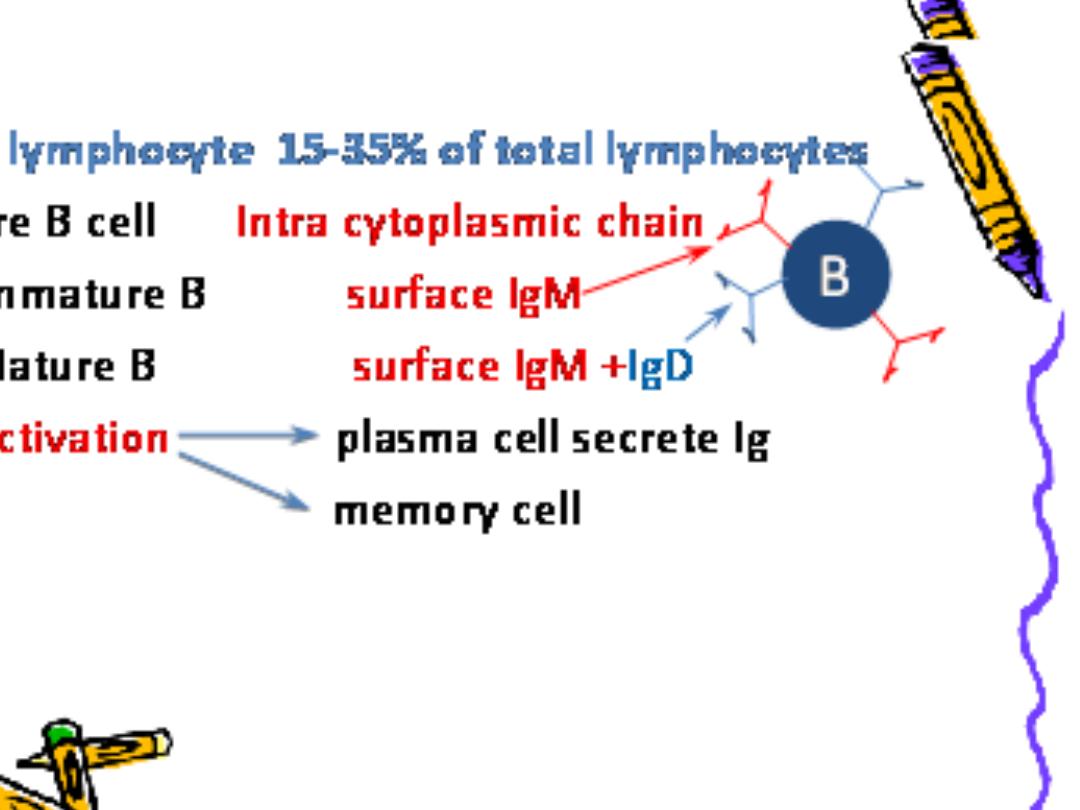
IgD

IgE
• 0.002 % of serum Ig ( detection by Elisa)
• In atopic patient the level increase by
handreds
• IgE also called
Reagenic or homocytotropic Ab
because of its ability of binding to FC
receptors on the surface of
Mast cells
&
basophiles
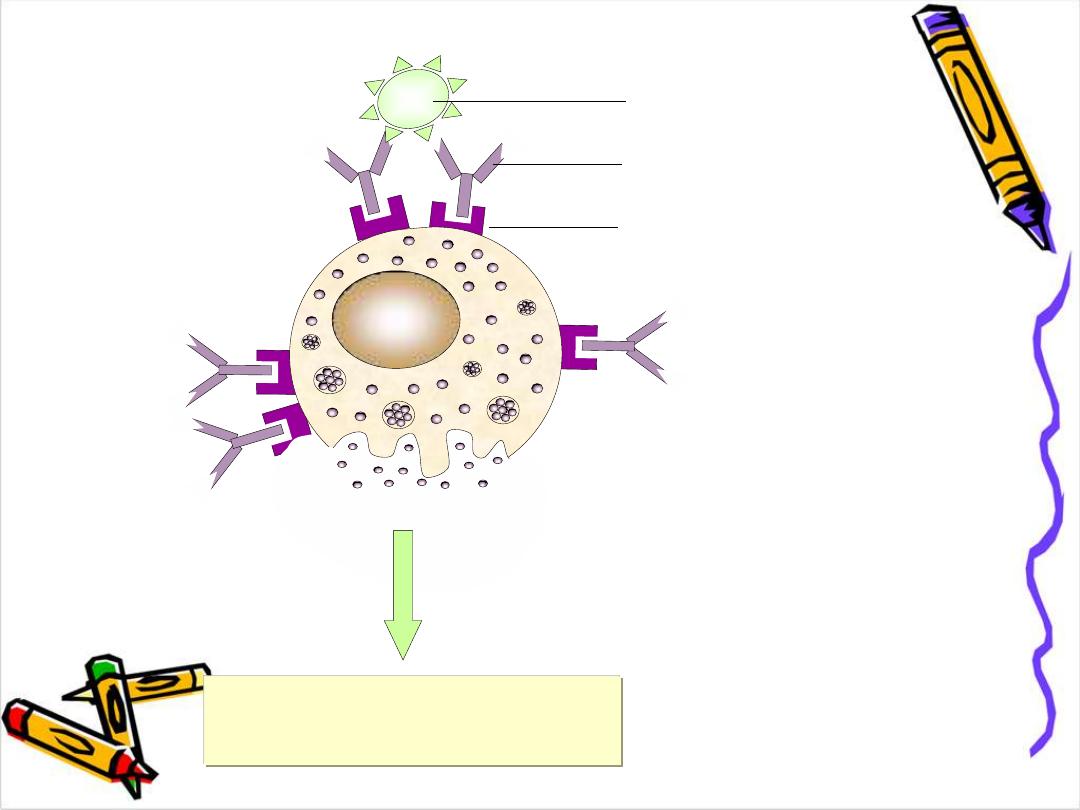
Fc
e
RI
degranulation
IgE
allergen
inflammation

Functions of IgE
• Triggering an acute inflammatory reaction
• Has the ability to bind to FC receptor on
eosinophils so
important against parasitic
infections
eosinophils contain granules that realize cat
Ionic proteins which are toxic to the parasites
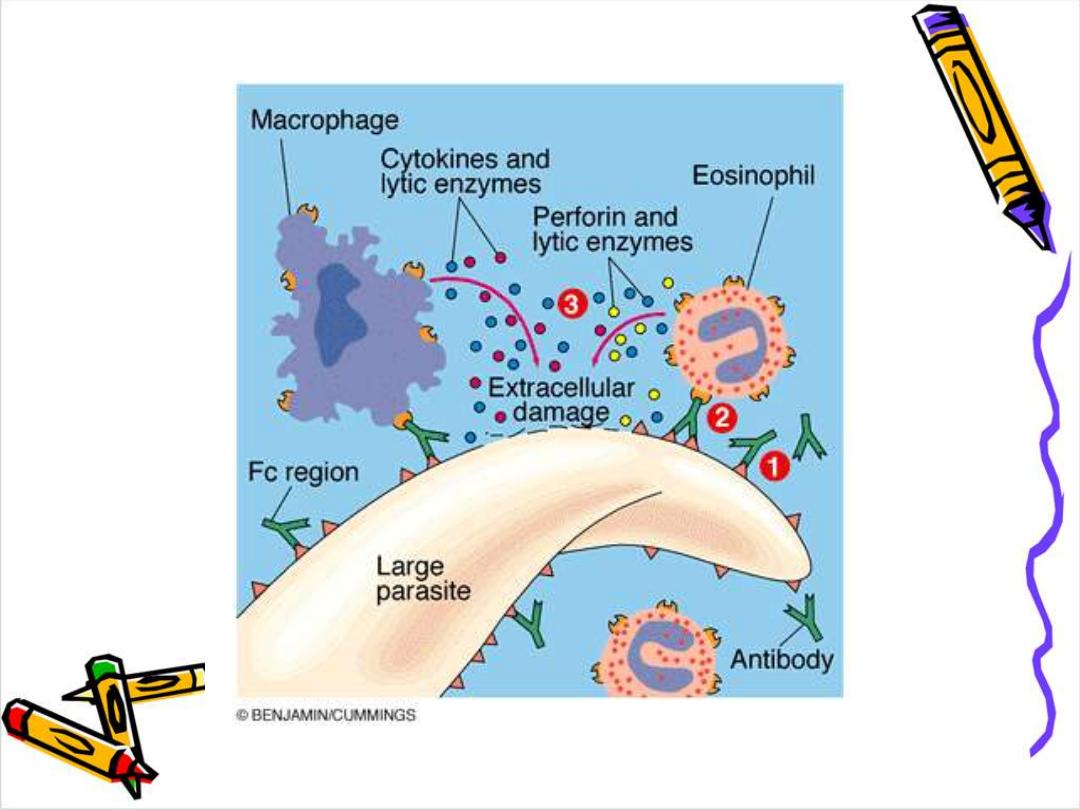

IgE increases in
• Parasitic infections
• Atopic patients
IL 4 causes switching of Ig to IgE
IL 5 causes eosinophilia
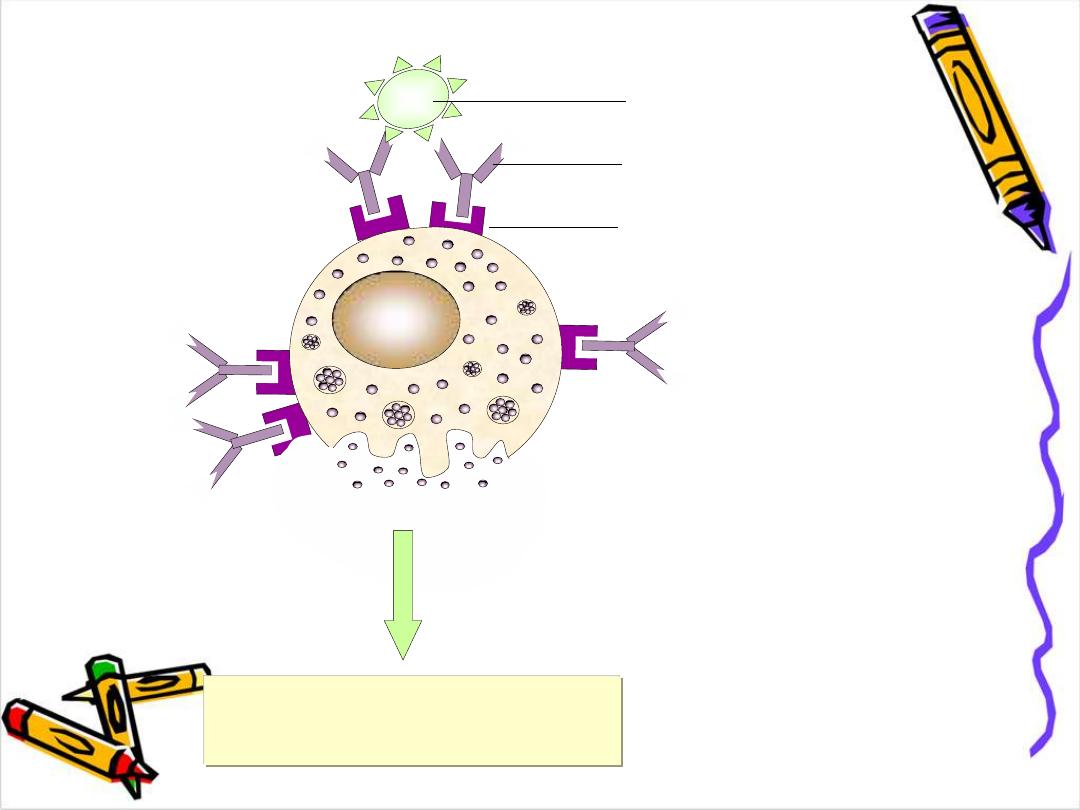
Fc
e
RI
degranulation
IgE
allergen
inflammation
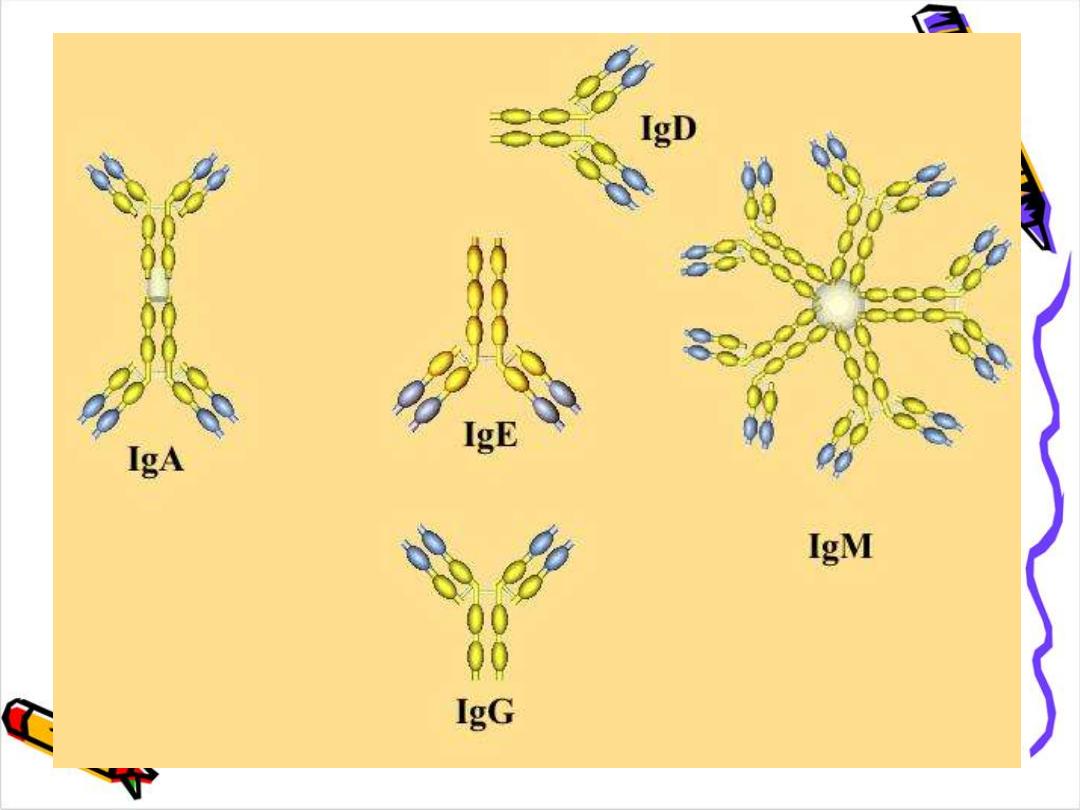

Variants of Ig
• Isotype
all classes ,Subclasses & forms of Ig
which present in normal individual
• Allotype
existence of allelic forms , single a.a.
variation in the peptide chain of Ig ( genetic
marker) IgG =GM, IgA=AM
• Idiotype
each Ig has its own antigenic
determinant area against which an anti-
idiotype Ab will be formed (Idiotype
•
antiidiotype network)
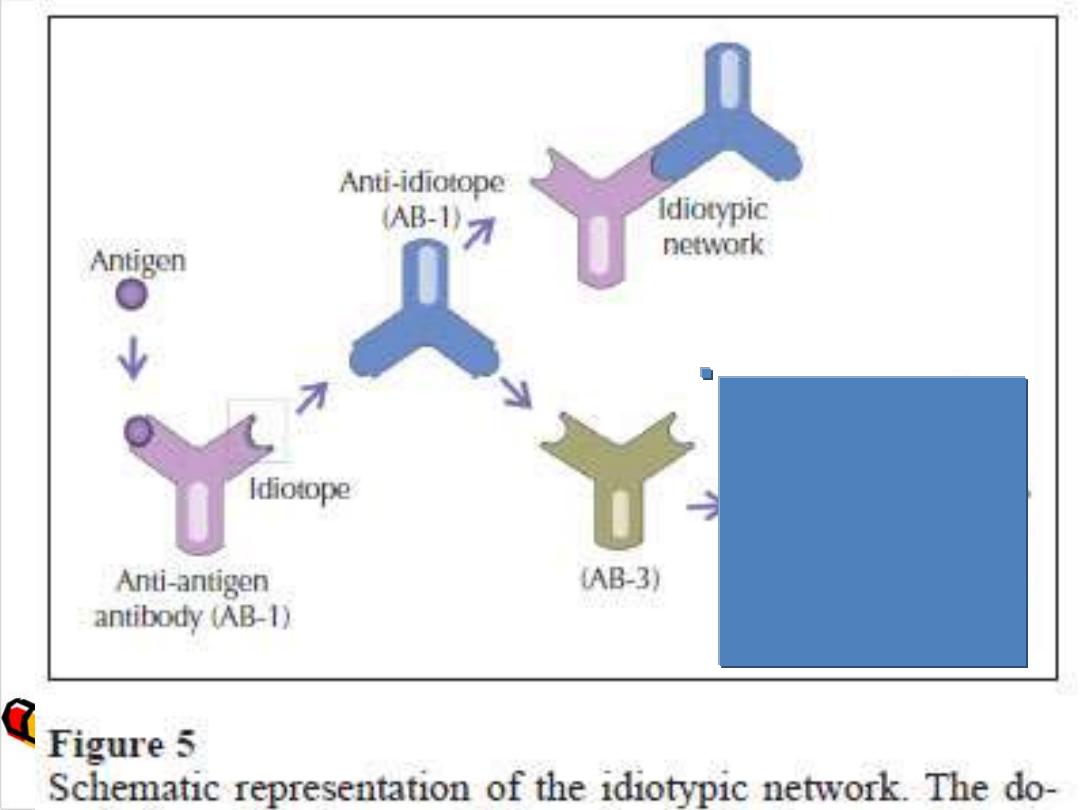
A.I. vaccine
Anti idiotype vaccine
Anti idiotype vaccine
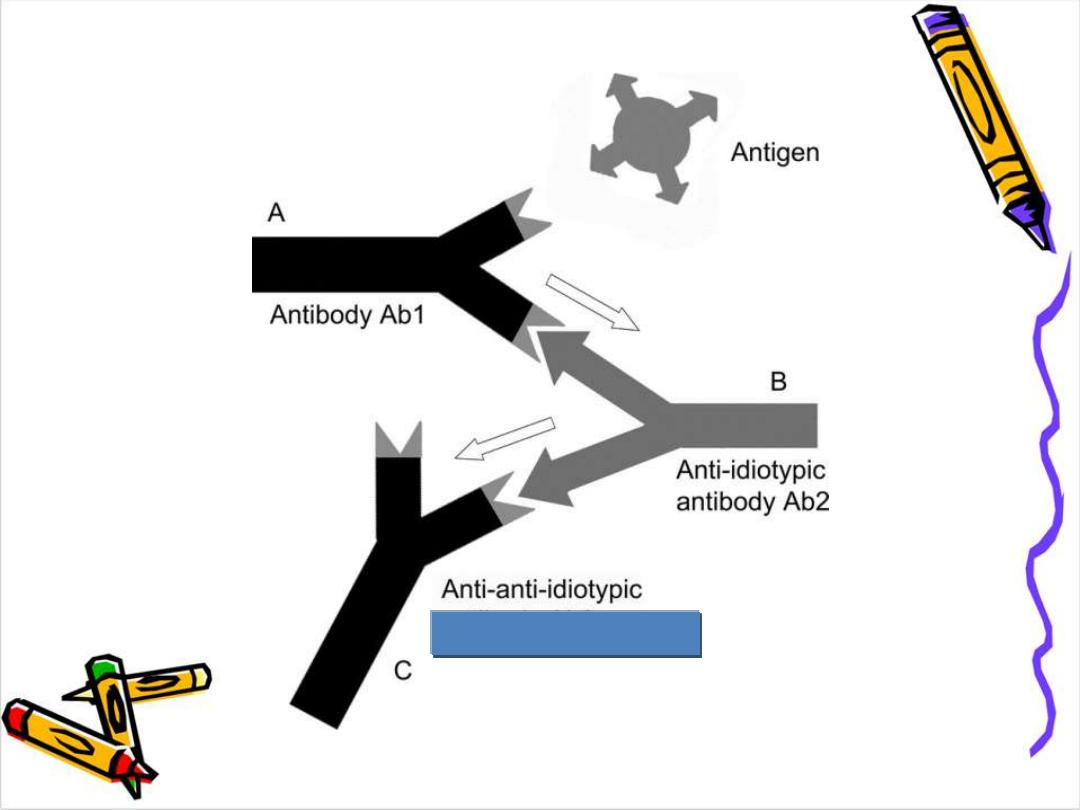
Anti idiotype vaccine

Characteristics of sp. Immune respond :
1-Discrimination (distinguish) between self &
Foreign Ag
Any Ag when reach the lymphoid tissue during
pre-natal period suppress any further
immunological response to that Ag in future
((self))
_
colonel deletion theory
_
During embryonic dev. All T & B lymphocytes that
carry auto –reactive receptors for self Ag
( (
Auto-reactive cells
) will be deleted by
apoptosis
self tolerance

2- specificity
Ab react specifically with Ag that causes its
production ,sometimes can react with similar
not identical = cross reaction
β- haemolytic streptococci can lead to
rheumatic heart dis
. Because cross reaction
between bacteria Ag & valve tissue in some
individuals

3-clonality
We have more that 10 T & B lymphocytic
clones (group) each clone with different Ag
receptor, when the Ag enter the body
lymphocytes bearing receptors that fit the
epitope best are stimulated to divided
(clonal selection theory)
this response is
called
primary immune response
8
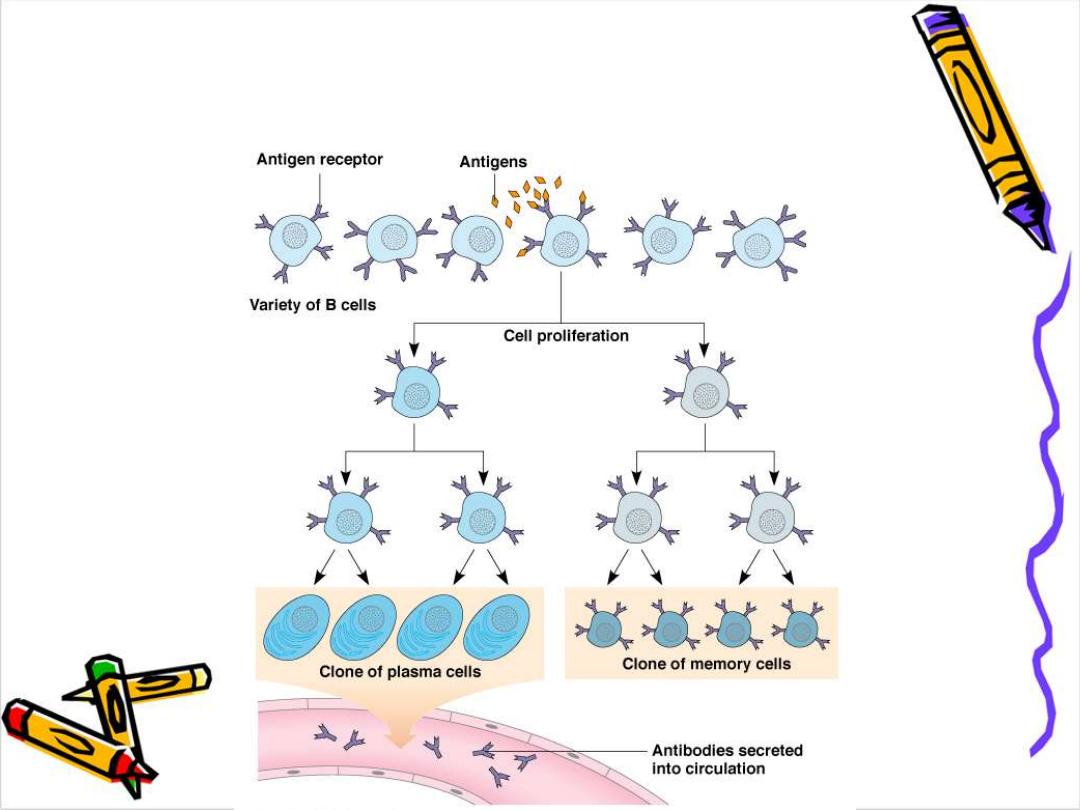
Clonal Selection of B Cells is Caused by
Antigenic Stimulation
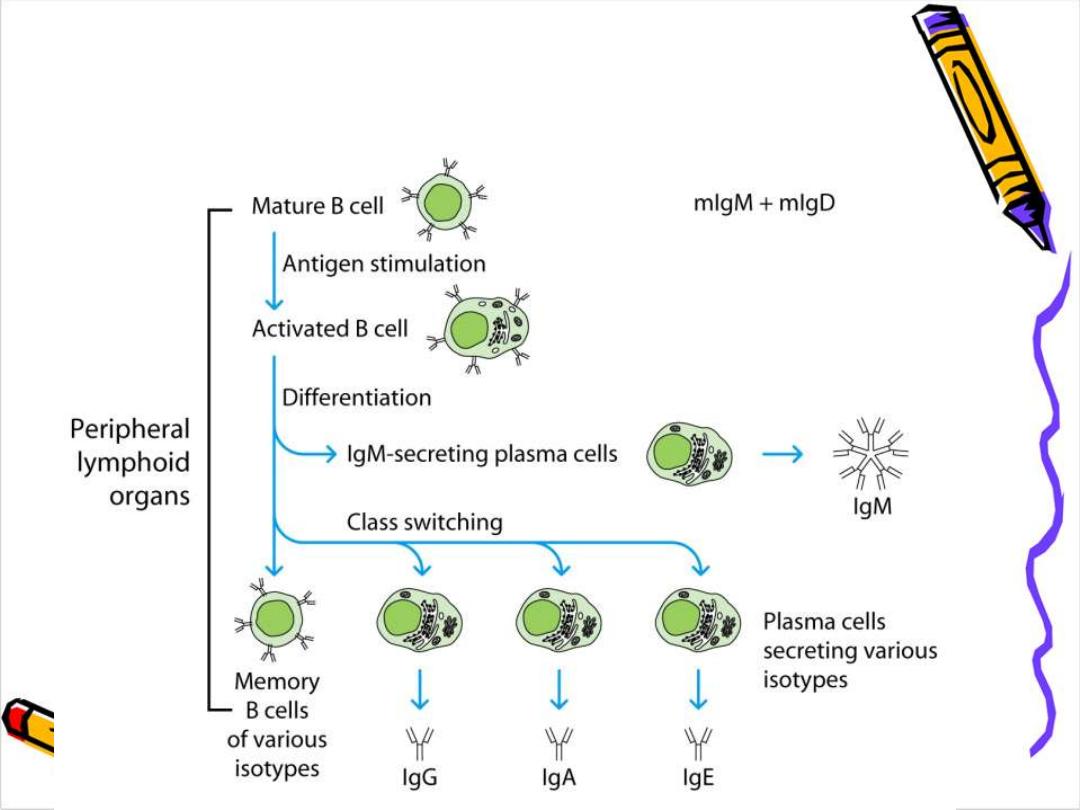
B lymphocyte development (2)
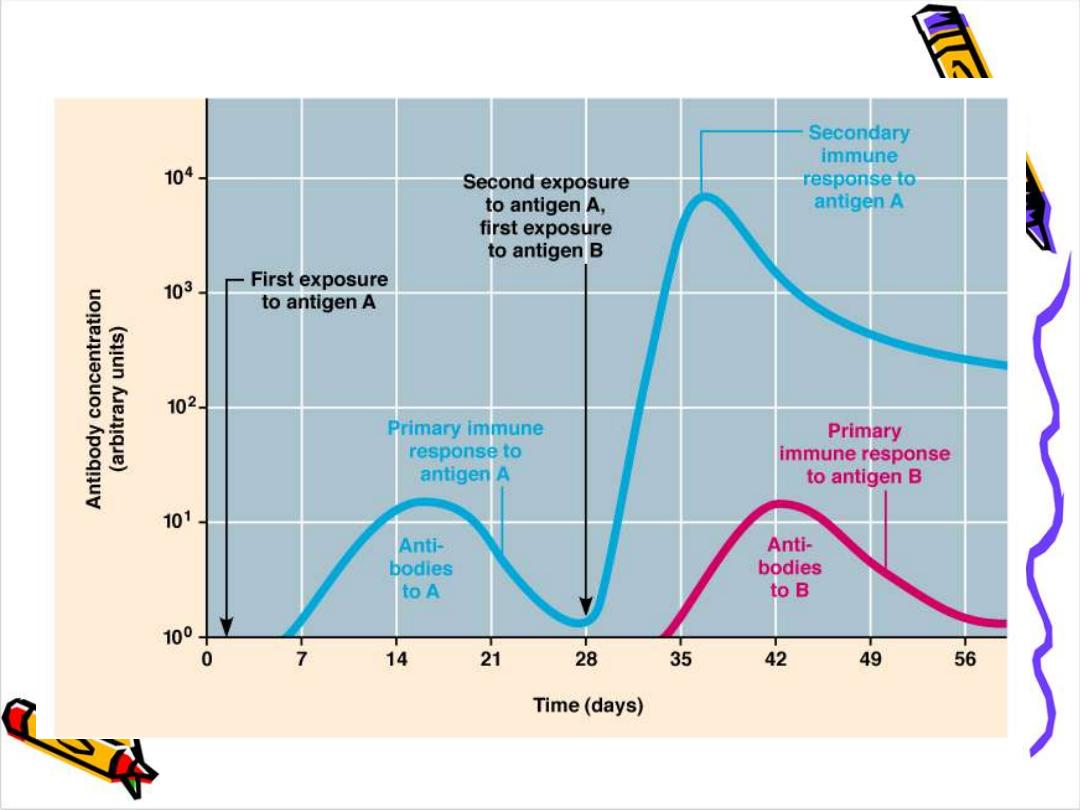

4-Anamnest response :(memory)
The primary I.R. (1
st
exposure)
a-Lag phase (7days) Ab level is zero (time for
finding appropriate Ag receptor) depend on
nature ,routs, immune state
b-Log phase Ab(mainly IgM) start to appear &
increase logarythemly
c-Plateau phase
d-decline phase

Secondary I.R. (2
nd
exposure)
there is
memory
cell so no lag
phase ,Ab titer quickly shooting
up 10-100 times
*There is genetic switching from
IgM in the pri. I.R. to
IgG
in the
2
nd
I.R.

Primary I.R.
Secondary I.R.
* There is lag phase
*No lag phase
*IgM class
*Ab of IgG class
*Low affinity Ab
*Ab of high affinity
*Ab titer is low
*Ab titer is high
*The host exposure for the
1
st
time so no memory cell
*Host exposure for the 2
nd
time there is memory cell
*Ab titer decline rapidly
*Ab titer decline slowly

Best example is the
vaccination
we
give booster
Doses(multiple doses) to shift the I.R.
from primary to secondary I.R.

THANK YOU
